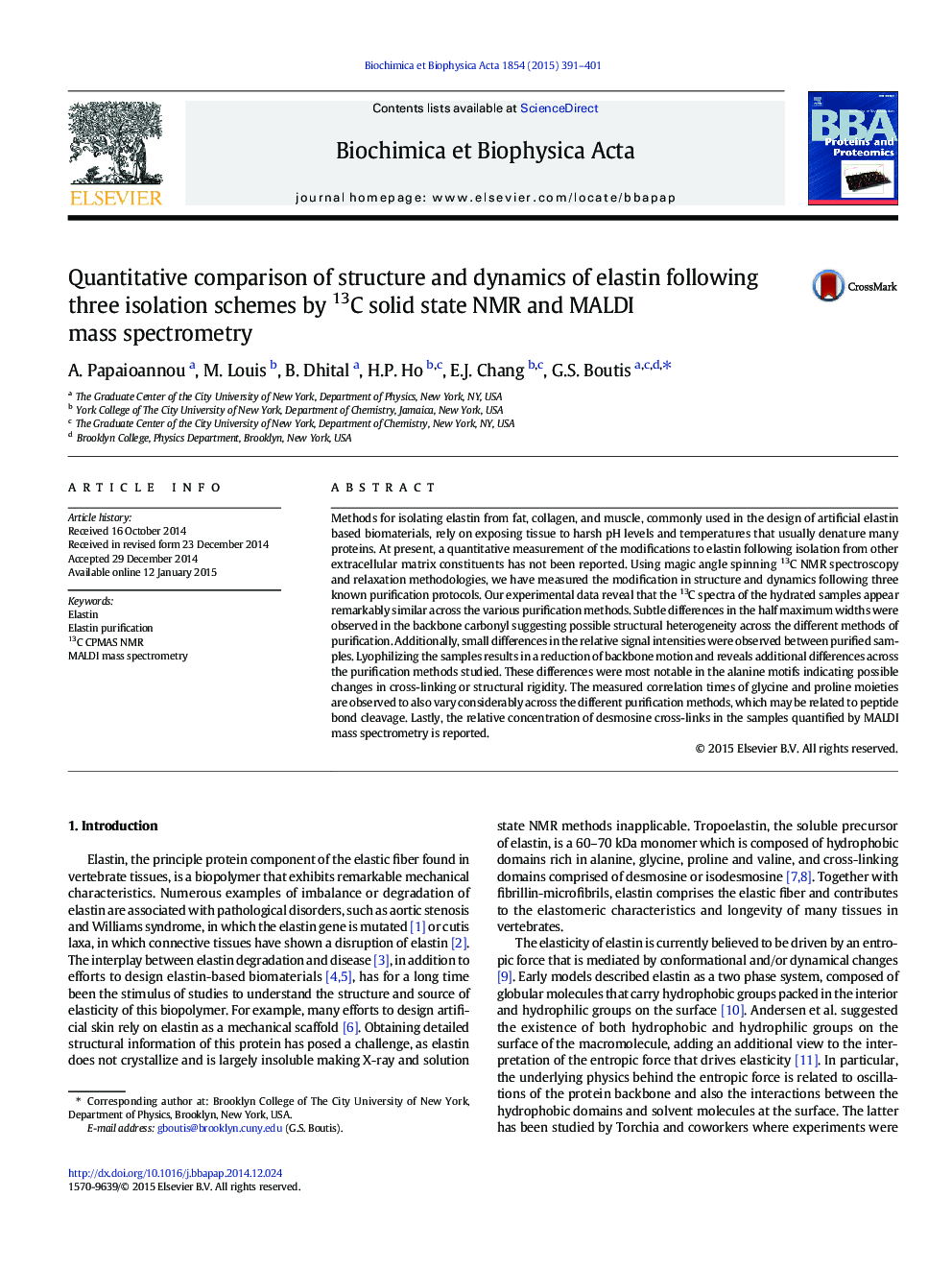| Article ID | Journal | Published Year | Pages | File Type |
|---|---|---|---|---|
| 1179265 | Biochimica et Biophysica Acta (BBA) - Proteins and Proteomics | 2015 | 11 Pages |
•13C NMR methods were applied to study elastin structure/dynamics after purification.•13C–1H correlation times of Gly and Pro moieties vary across purification methods.•Desmosine cross-links in the samples were quantified by MALDI mass spectrometry.•Differences in carbonyl line-widths suggest possible structural heterogeneity.•CP intensity of Cα-Ala appears greater before purification.
Methods for isolating elastin from fat, collagen, and muscle, commonly used in the design of artificial elastin based biomaterials, rely on exposing tissue to harsh pH levels and temperatures that usually denature many proteins. At present, a quantitative measurement of the modifications to elastin following isolation from other extracellular matrix constituents has not been reported. Using magic angle spinning 13C NMR spectroscopy and relaxation methodologies, we have measured the modification in structure and dynamics following three known purification protocols. Our experimental data reveal that the 13C spectra of the hydrated samples appear remarkably similar across the various purification methods. Subtle differences in the half maximum widths were observed in the backbone carbonyl suggesting possible structural heterogeneity across the different methods of purification. Additionally, small differences in the relative signal intensities were observed between purified samples. Lyophilizing the samples results in a reduction of backbone motion and reveals additional differences across the purification methods studied. These differences were most notable in the alanine motifs indicating possible changes in cross-linking or structural rigidity. The measured correlation times of glycine and proline moieties are observed to also vary considerably across the different purification methods, which may be related to peptide bond cleavage. Lastly, the relative concentration of desmosine cross-links in the samples quantified by MALDI mass spectrometry is reported.
Graphical abstractFigure optionsDownload full-size imageDownload high-quality image (133 K)Download as PowerPoint slide
